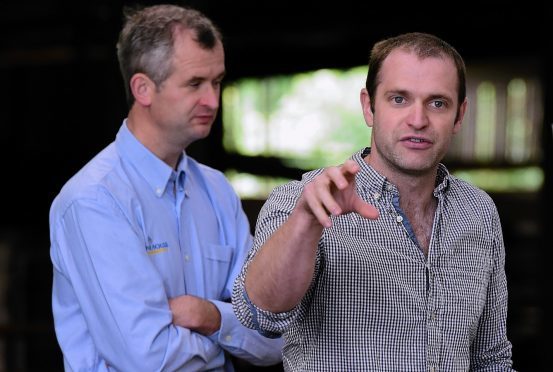Technology which enables farmers and vets to detect pneumonia in calves more than two days before they start to look sick has the potential to transform cattle farming.
SRUC veterinary investigation officer Tim Geraghty said temperature measuring ear tags and boluses, alongside the use of activity monitors, could help detect calves with pneumonia earlier. He admitted the technology, which is already in use on some farms across the world, was currently too expensive for wide-scale commercial use but said once manufacturers were able to reduce the costs of the tools, they could be used to benefit Scottish beef and dairy herds.
Speaking at the beef efficiency meeting at Drumsleed, Mr Geraghty said the temperature-measuring ear tags and boluses would be beneficial because the temperature of calves with pneumonia increases up to 56 hours before they begin to look sick. Activity monitors would also alert the farmer to any calves which were not moving around enough. He said the veterinary community was still getting to grips with pneumonia and said the disease was “very difficult to solve”.
Vaccines had a role to play, however they were only one tool in preventing the disease and managing the animal’s environment and stress levels were crucial, added Mr Geraghty.
Studies had shown there were more bugs present in the air of sheds with a high proportion of solid walls.
“It’s key to get fresh air around the calves in the housing system,” said Mr Geraghty. He said studies had also shown that stress added to the chances of the calves getting the disease and those which were bought through auction marts, rather than privately from a farm, had a higher chance of getting it. “Focus on how you can reduce stress in your system by providing easy access to feed and water and minimise handling and transport.”
